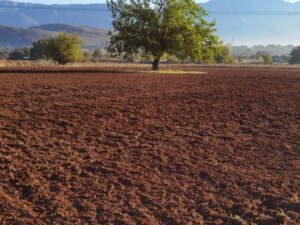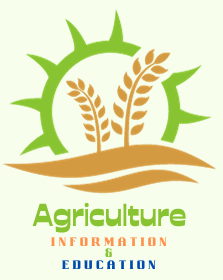
Table of Contents
ToggleIntroduction:
Soil composition is a critical factor that profoundly influences crop production, shaping the foundation upon which plants grow and develop. A myriad of interconnected factors, including mineral content, organic matter, soil texture, pH, and nutrient levels, collectively contribute to the complex nature of soil composition. Farmers and agronomists alike must comprehend these intricacies to optimize conditions for crop growth and ensure sustainable agricultural practices.
Mineral Content:
One of the primary constituents of soil is mineral content, consisting of particles with varying sizes—sand, silt, and clay. The proportions of these minerals determine soil texture, influencing crucial properties such as drainage and water retention. Sandy soils, characterized by larger particles, drain quickly, making them suitable for certain crops but requiring more frequent irrigation. In contrast, clayey soils, with smaller particles, retain water more effectively but may suffer from drainage issues. Loamy soils, a balanced mixture of sand, silt, and clay, are generally considered ideal for most crops due to their optimal combination of drainage and water retention.
Organic Matter:
Organic matter is another vital component of soil composition, originating from the decomposition of plant and animal materials. This organic matter enhances soil structure, water retention, and nutrient availability. Microorganisms in the soil break down organic matter into humus, a rich and stable component that serves as a reservoir of essential nutrients for plants. The presence of organic matter fosters a fertile environment that supports microbial life and contributes to overall soil health.
Soil Texture:
The texture of the soil, closely tied to mineral content, plays a pivotal role in crop production. Soil texture affects water retention, aeration, and nutrient availability. Sandy soils, being coarse, allow water to pass through quickly, making them prone to drought conditions. On the other hand, clayey soils, with fine particles, retain water for longer periods but may suffer from poor drainage and aeration. The ideal compromise is loamy soil, striking a balance that promotes adequate drainage while retaining essential moisture for plant growth.
pH Levels:
Soil pH measures the acidity or alkalinity of the soil and significantly impacts nutrient availability to plants. Different crops exhibit specific preferences for pH levels, and maintaining the appropriate range is crucial for optimal growth. Most crops thrive in slightly acidic to neutral soils, with a pH range of 6.0 to 7.5. However, certain plants may prefer slightly acidic or alkaline conditions. Regular soil testing is essential to monitor pH levels and implement corrective measures, such as lime application, to adjust soil acidity or alkalinity.
Nutrient Levels:
The availability of nutrients in the soil is a fundamental determinant of crop health and productivity. Essential nutrients, including nitrogen, phosphorus, potassium, calcium, magnesium, sulfur, and various micronutrients, must be present in adequate quantities. Soil testing is a valuable tool for assessing nutrient levels and guiding farmers in the strategic application of fertilizers. Understanding the specific nutrient requirements of crops helps optimize fertilizer use, minimizing waste and potential environmental impact.
Microbial Activity:
The microbial community in the soil, comprised of bacteria, fungi, and other microorganisms, is a dynamic and integral component of soil health. Beneficial microbes contribute to nutrient cycling, organic matter decomposition, and disease suppression. Healthy soil with a diverse microbial population supports robust plant growth by enhancing nutrient availability and promoting overall soil fertility. Practices such as cover cropping, crop rotation, and minimal tillage can help maintain and enhance microbial activity in the soil.
Compaction and Aeration:
Soil compaction is a common issue that arises from factors like heavy machinery use, foot traffic, and certain agricultural practices. Compacted soils limit root growth, impede water infiltration, and hinder the movement of air—a crucial element for root respiration. Adequate aeration is essential for nutrient uptake and overall plant health. Farmers employ various strategies, including cover cropping and reduced tillage, to improve soil structure, mitigate compaction, and promote optimal aeration.
Understanding the complex interplay of these soil composition factors is essential for farmers seeking to optimize crop production. Sustainable agriculture practices aim to preserve and enhance soil fertility, promoting long-term productivity while minimizing environmental impact. Crop rotation, cover cropping, and agroforestry are examples of practices that contribute to maintaining soil health and biodiversity, ultimately benefiting both farmers and the broader ecosystem.
Crop-Specific Considerations:
Different crops have unique requirements and preferences when it comes to soil composition. For instance, root crops like carrots and potatoes thrive in loose, well-draining soils, while rice, a staple for many communities, requires flooded conditions. Understanding the specific needs of each crop is crucial for successful cultivation.
Soil Management Practices:
To address the dynamic nature of soil composition, farmers employ various soil management practices. Crop rotation involves growing different crops in sequential seasons, preventing the depletion of specific nutrients and reducing the risk of soilborne diseases. Cover cropping involves planting specific crops during fallow periods to protect and enrich the soil. Minimal tillage practices aim to disturb the soil as little as possible, preserving its structure and minimizing erosion.
Importance of Soil Testing:
Regular soil testing is a cornerstone of effective soil management. By analyzing soil samples, farmers can assess nutrient levels, pH, and other critical factors. Armed with this information, they can make informed decisions regarding fertilizer application, lime amendments, and other corrective measures to optimize soil conditions for specific crops.
Environmental Impact:
The sustainable management of soil composition not only benefits crop production but also has broader environmental implications. Excessive use of fertilizers and improper soil management practices can lead to nutrient runoff, soil erosion, and water pollution. Adopting sustainable practices helps conserve soil resources, protect water quality, and contribute to the overall resilience of ecosystems.
Challenges and Solutions:
While understanding and managing soil composition is crucial for sustainable agriculture, farmers often face challenges such as resource constraints, climate variability, and changing market demands. Integrated farming systems, which combine crop and livestock production, can contribute to nutrient cycling and overall soil fertility. Agroecological approaches, emphasizing the integration of ecological principles into agriculture, offer holistic solutions that prioritize both productivity and environmental conservation.
Conclusion:
In conclusion, soil composition is a multifaceted aspect of agriculture that significantly influences crop production. The intricate interplay of mineral content, organic matter, soil texture, pH, and nutrient levels requires a nuanced and adaptive approach to soil management. By implementing sustainable practices, farmers can enhance soil fertility, promote biodiversity, and ensure the long-term productivity of their land. The quest for sustainable agriculture is not only a necessity for food security but also a responsibility to preserve the health of the planet for future generations.
